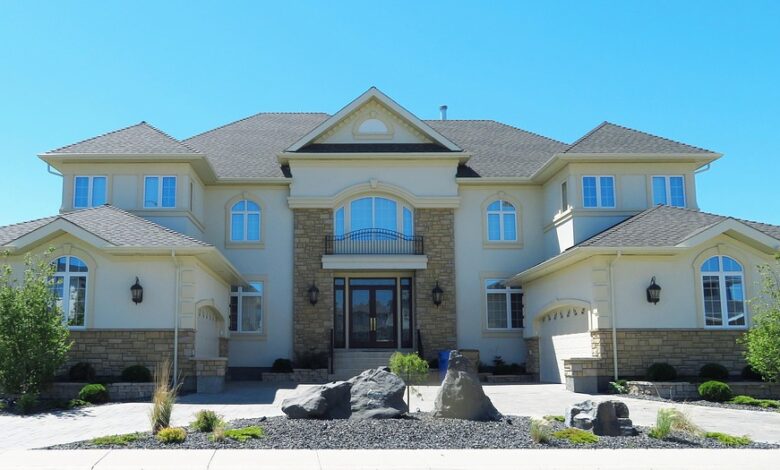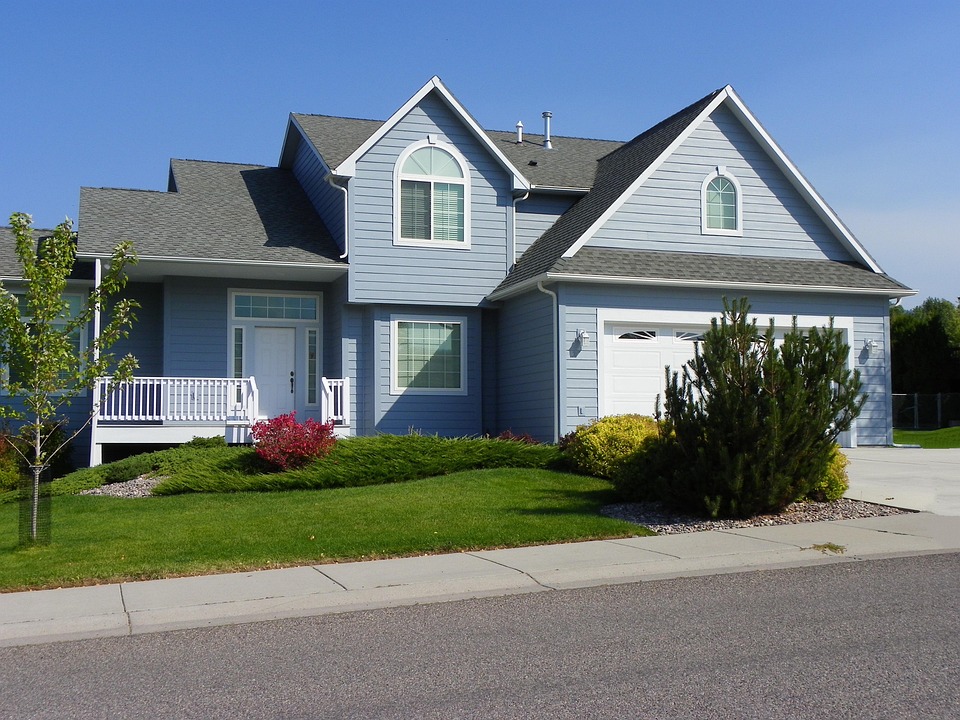Essential Coverage for Uncommon Property Risks

In the world of property protection, most homeowners and renters rightly focus on securing a standard insurance policy. This foundational coverage is designed to shield their most valuable assets from common perils like fire, wind damage, and theft. However, relying solely on these conventional policies often leaves gaping, significant holes in a person’s overall financial defense strategy.
The standard home policy is purposefully written to exclude many of the costliest and most unpredictable risks facing property owners today. These exclusions force individuals to seek out tailored solutions to truly protect their homes and belongings completely.
Specialty property insurance refers to these specific, targeted policies or endorsements that cover unique risks that standard policies refuse to touch. This specialized coverage is not a luxury for the ultra-rich; it is a critical necessity for anyone living in a high-risk area or owning high-value, unique possessions. Understanding and filling these gaps is a non-negotiable step in achieving comprehensive financial security.
Why Standard Policies Fall Short
To properly assess the need for specialty property insurance, one must first understand the fundamental limitations of a standard Homeowners or Renters policy. These basic policies are engineered to cover common, calculable risks efficiently. They operate on the principle of providing broad coverage for typical situations. However, when a risk is deemed too unpredictable, too widespread, or too catastrophic, insurers simply exclude it. This practice protects the financial solvency of the insurance company itself.
The insurance industry categorizes certain events as widespread catastrophic risks. These events can affect a massive number of policyholders simultaneously. Insuring such events under standard policies would make the financial exposure impossibly high for any single company. Therefore, these risks are intentionally left uncovered by default. This leaves the homeowner responsible for potentially devastating financial loss.
Furthermore, standard policies impose strict sub-limits on specific high-value items. These items include jewelry, fine art, and rare collections. Even if the loss is covered (like theft), the maximum payout for these categories is often capped at a meager amount. This cap is typically far below the item’s true replacement cost. These limitations necessitate additional, specialized coverage to secure the full value of the asset.
Specialty policies fill these deliberate exclusions and limitations effectively. They allow individuals to tailor their protection precisely to the specific risks they face. This customization moves coverage from merely adequate to truly comprehensive.
The Big Two: Natural Disaster Exclusions
Two of the most destructive natural perils are almost universally excluded from all standard property insurance policies. These exclusions require the purchase of entirely separate insurance contracts. Failing to secure these two policies is a major financial oversight in vulnerable regions.
A. Flood Insurance
Damage caused by rising water, storm surge, overflow of inland waters, or mudflow is strictly excluded from standard home policies. This means that a pipe bursting inside your home is covered, but water rising from the ground outside is not. Flood insurance must be purchased through a dedicated program, typically the National Flood Insurance Program (NFIP) in the United States. Private insurers also offer flood policies in some areas.
This specialized coverage is mandatory for homes located in high-risk flood zones. It is increasingly recommended even for moderate-risk areas. Floods are the most common and costly natural disaster worldwide. The coverage pays for damages to the structure and the personal property inside the home. It is a critical layer of protection against water devastation.
B. Earthquake Insurance
Losses resulting from any form of earth movement are also strictly excluded. This includes damage caused by earthquakes, landslides, sinkholes, and tremors. Earthquake insurance must be added as an endorsement to a home policy or purchased as a separate, distinct policy. It is essential for those living in seismically active regions.
Earthquake policies often come with unique features, particularly a very high deductible. This deductible is usually calculated as a percentage of the dwelling’s value, not a fixed dollar amount. This percentage can range from 10% to 25%, meaning the homeowner assumes a large initial financial risk. This high deductible helps keep the substantial premium costs somewhat manageable.
Valuable Articles: Protection for Treasured Possessions

Standard policy sub-limits can leave owners of high-value personal property severely underinsured. Imagine losing a valuable diamond ring or an antique collection to theft. The sub-limit payout would likely cover only a fraction of the cost to replace the item. Valuable Articles Insurance, or scheduled personal property coverage, addresses this disparity directly.
C. Jewelry and Fine Arts
This specialty coverage is used to schedule specific, high-value items onto the policy. To schedule an item, the insurer usually requires a recent professional appraisal. The item is then insured for its full appraised value. This removes the item from the standard policy’s restrictive sub-limits.
A significant advantage of this type of coverage is its often broader protection. It frequently covers “all risks,” including accidental loss or mysterious disappearance. A standard policy might cover theft but not accidentally dropping a ring down the drain. Scheduled coverage is truly comprehensive.
D. Collections and Unique Items
Coverage can be extended to various other high-value collections. This includes rare stamps, coin collections, antique furniture, or expensive sports memorabilia. Each piece must be appraised and individually listed on the policy endorsement. This ensures that the full value of the collection is protected against theft or damage. It is a crucial step for serious collectors.
This coverage is often written on a “replacement cost” basis. This ensures the payout is sufficient to acquire a similar quality replacement. This protection eliminates the uncertainty of standard contents coverage. It provides peace of mind for cherished, irreplaceable possessions.
Addressing Niche Property Risks
Beyond the major natural disasters and high-value contents, there are several niche situations that necessitate specialized property policies. These unique policies address risks stemming from specific locations, ownership types, or usage. They are highly focused on particular vulnerabilities.
E. Title Insurance
Title insurance is a one-time payment policy purchased when a property is bought. It protects the buyer from financial loss due to defects in the property’s title. Defects can include undisclosed liens, errors in public records, or fraudulent signatures. This insurance protects the buyer’s legal ownership of the property. It is a crucial safeguard against past legal disputes.
F. Landlord/Rental Property Insurance
Individuals who own property but rent it out to tenants require a specific type of coverage. Standard homeowners policies are not designed for rental business risks. Landlord insurance covers the dwelling structure, but it also includes rental income protection. This protects the owner if tenants must move out during extensive repairs after a covered loss. It is a necessary policy for real estate investors.
G. Vacant Home Insurance
If a home is left unoccupied for an extended period, typically 30 to 60 days, standard coverage may be suspended or canceled. Vacant homes face higher risks of vandalism, pipe bursts, and undetected damage. Vacant home insurance is a specialty policy designed to cover these heightened risks. It is essential for properties under renovation or awaiting sale.
H. Umbrella Liability Policy
While not strictly property insurance, a personal umbrella liability policy works in conjunction with property coverage. It provides an extra layer of liability protection above the limits of both the auto and home policies. This coverage is essential for affluent individuals. It protects their total net worth from massive, catastrophic lawsuits that exceed standard policy limits.
The Importance of High Deductibles and Riders

Specialty insurance often requires a different approach to managing deductibles and policy riders. These features are highly customized to the specific nature of the risk being covered. Policyholders must fully understand these unique aspects before committing.
Specialty policies often utilize higher deductibles to manage the insurer’s exposure to catastrophic risk. The percentage deductible in an earthquake policy is a prime example. Policyholders must budget accordingly for this large potential out-of-pocket expense. Self-insuring the deductible is a necessary part of the strategy.
Many of these policies are purchased via endorsements or riders added directly to the main homeowners contract. This streamlines the process and ensures all coverage is managed by a single insurer. The language within the endorsement must be reviewed meticulously. The endorsement clearly spells out what is covered and what remains excluded.
For flood insurance, the coverage limits are often mandated by the government program itself. Homeowners may need to purchase excess flood insurance from a private carrier. This is necessary if the NFIP limits are insufficient to cover the full replacement cost of the dwelling. Stacking policies is sometimes required for full protection.
When to Consult a Specialist Agent
The complexity of specialty insurance makes consulting a qualified professional highly advisable. A standard insurance agent may not have the expertise or access to these unique markets. A specialist agent can guide the homeowner through the nuances effectively.
A specialist can accurately assess the true risk exposure based on the property’s geographic location. They can determine the precise flood zone designation and the local seismic risk factor. This assessment ensures the homeowner buys the correct amount and type of specialty coverage. Under-insuring a catastrophic risk is a financial disaster.
They also understand the often-confusing interplay between different policies. The specialist ensures there are no overlapping coverages or, more importantly, no significant gaps. They can properly coordinate the claims process across multiple insurers if a massive disaster occurs. This professional guidance is invaluable.
The specialist can also help secure the necessary appraisals and documentation required to schedule valuable property. They understand the specific requirements for insuring unique items like high-end wine collections or classic cars. Their expertise simplifies an otherwise complex process. This consultation is a small investment that yields major protection.
Protecting Unique and Non-Standard Assets
The realm of specialty property insurance extends beyond homes and fine jewelry. It covers highly unique assets that fall outside the traditional definition of residential property. This niche market ensures that almost any valuable asset can be properly protected.
I. Classic and High-Value Automobiles
Standard auto policies are often insufficient for classic cars or exotic, high-value vehicles. Specialty policies are purchased based on the vehicle’s agreed-upon value, not its depreciated market value. They also include specialized features like coverage for spare parts and protection during transit to shows. This ensures the full value of the investment is maintained.
J. Watercraft and Yacht Insurance
Boats and yachts require specialized marine insurance policies. These are far more complex than standard auto policies. They cover risks unique to the sea, such as salvage costs, pollution liability, and international transit. The policy is customized based on the boat’s size, value, and intended operating area. Protecting these assets requires dedicated maritime expertise.
K. Aviation Insurance
The ownership of private planes or complex drones requires highly specialized aviation insurance. This niche market covers hull damage, passenger liability, and ground risks. The coverage is tailored based on the pilot’s experience and the plane’s maintenance records. This is one of the most complex forms of specialty coverage available.
L. Farm and Ranch Insurance
Agricultural properties require specialized policies that go beyond typical residential and commercial coverage. Farm and ranch insurance covers livestock, crops, specialized equipment, and unique agricultural liabilities. This reflects the unique and complex risks of running a farming operation. This specialized approach ensures comprehensive protection for the entire enterprise.
Conclusion
Specialty property insurance is a necessary solution to fill the critical gaps left by standard home policies.
It is an essential component of financial planning for anyone facing catastrophic natural disaster risks.
The major exclusions, particularly flood and earthquake damage, demand the purchase of separate, dedicated policies.
Valuable Articles coverage is necessary to protect jewelry, art, and collections that exceed standard policy sub-limits.
Hybrid policies, such as Landlord and Vacant Home insurance, address the unique risks of specific property usage.
High deductibles, especially on disaster policies, necessitate that homeowners maintain a substantial emergency savings fund.
Consulting a specialist agent is vital to accurately assess unique risks and properly structure complex layered protection.
This specialized market ensures that almost any valuable or non-standard asset can be protected against unique perils.
Securing these policies moves a person from inadequate coverage to truly comprehensive and effective financial defense.
Ignoring the need for specialty protection leaves your most cherished assets exposed to the costliest and most unpredictable risks.
This investment safeguards your accumulated wealth and guarantees your ability to fully recover from a major disaster.
Properly managing these complex policies is the hallmark of sophisticated, responsible financial stewardship.


